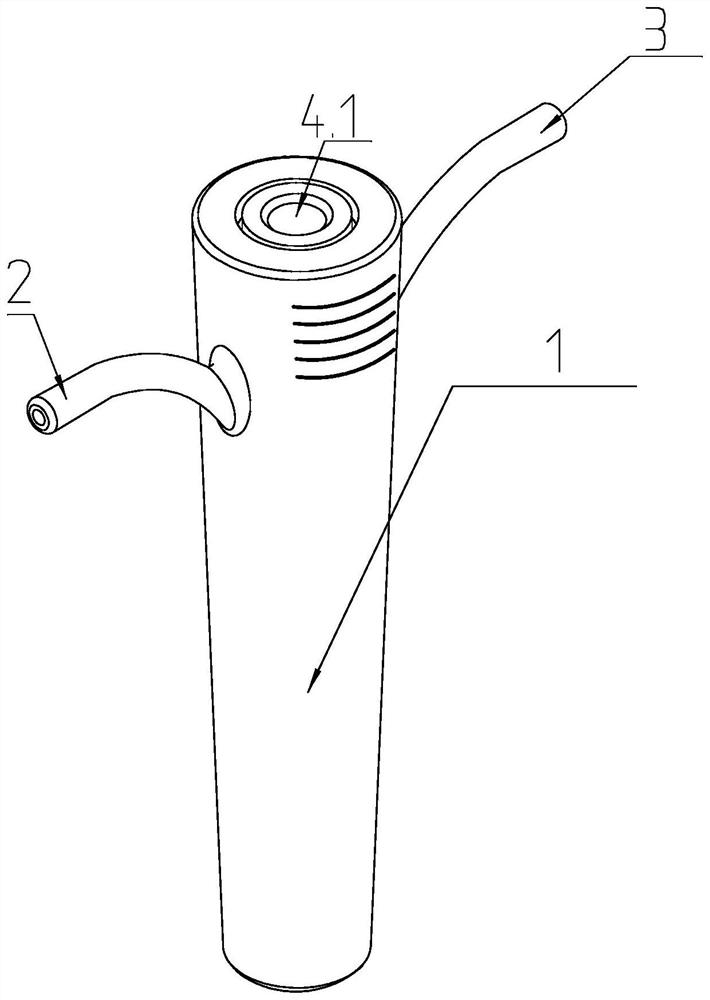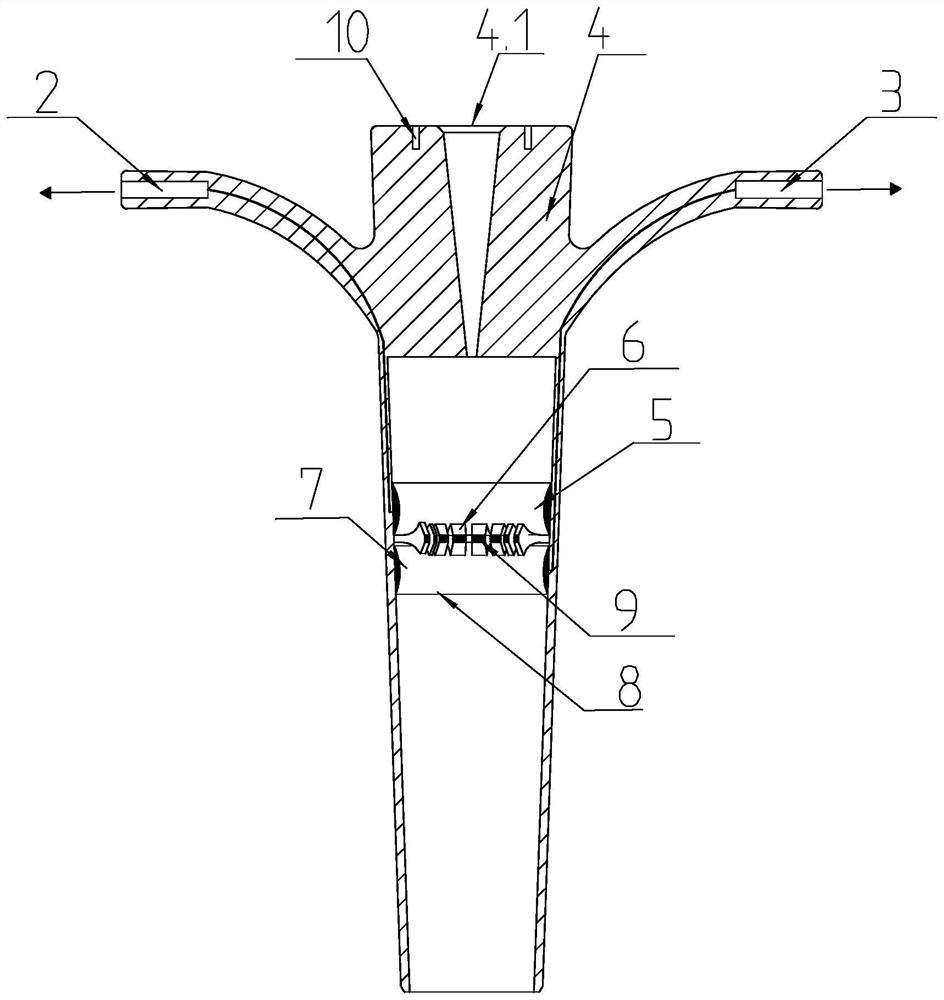Sealing cap used for endoscope and ureter or flow guide tube in matched mode
A technology of sealing cap and ureter, which is applied in the field of medical devices, can solve problems such as inconvenient position adjustment of endoscopes, and achieve the effects of improved convenience, low manufacturing cost, and simple structure
- Summary
- Abstract
- Description
- Claims
- Application Information
AI Technical Summary
Problems solved by technology
Method used
Image
Examples
Embodiment approach 1
[0050] (refer to Figure 6-Figure 7 ) inflate the first inflatable part 5 through the first inflatable channel 2, and inflate the second inflatable part 7 through the second inflatable channel 3, so that the first inflatable part 5 is inflated to form a first balloon, and the second inflatable part is inflated Part 7 forms a second balloon, the first balloon and the second balloon expand at the same time, and the expansion of the walls of the two balloons generates outward tension, leaning against both sides of the limiting part 6, and the limiting part is supported by the two balloons. 6 has a certain bending strength, so that the limiting part 6 cannot swing upwards or downwards. It is equivalent to that the clamping limit 6 is clamped on the outer wall of the cavity mirror 11 with a certain strength. Furthermore, in the process, when the endoscope 11 needs to be fixed, the stopper 6 can apply a radial force around the tube wall of the endoscope 11 to increase the frictiona...
Embodiment approach 2
[0052] (refer to Figure 8-Figure 9 ) only inflate the first inflatable part 5 through the first inflatable channel 2, so that the first inflatable part 5 expands to form the first balloon, and the first balloon wall expands to generate outward tension, so that the first balloon leans against the limit At this time, the limiting portion 6 can only bend downward. If the limiting part 6 bends downward, the diameter of the space enclosed by the end of the limiting part 6 will decrease, which is beneficial for the endoscope 11 to pass through when inserted, that is, the endoscope 11 can only move in the "extending" direction. However, since the first balloon leans against the limiting portion 6, when the endoscope 11 has passed the limiting portion 6 and is pulled out, the limiting portion 6 cannot bend upwards, and the endoscope 11 will be clamped on the limiting portion 6, therefore, the movement of the cavity mirror 11 in the "retracting" direction is limited. This can facili...
Embodiment approach 3
[0054] (refer to Figure 10-Figure 11 ) This embodiment is opposite to Embodiment 2. The second inflatable part 7 is only inflated to form the second balloon, so that the second balloon leans against the bottom of the limiting part 6. At this time, the limiting part 6 can only bend upwards, and the endoscope 11 can only carry out the movement of " shrinking " direction. Therefore, the movement of the endoscope 11 in the "extend" direction is limited. This can facilitate the diagnosis and treatment of the endoscope 11 only to the outside, and is generally used for ureteral calculus excretion.
PUM
 Login to View More
Login to View More Abstract
Description
Claims
Application Information
 Login to View More
Login to View More - R&D
- Intellectual Property
- Life Sciences
- Materials
- Tech Scout
- Unparalleled Data Quality
- Higher Quality Content
- 60% Fewer Hallucinations
Browse by: Latest US Patents, China's latest patents, Technical Efficacy Thesaurus, Application Domain, Technology Topic, Popular Technical Reports.
© 2025 PatSnap. All rights reserved.Legal|Privacy policy|Modern Slavery Act Transparency Statement|Sitemap|About US| Contact US: help@patsnap.com



